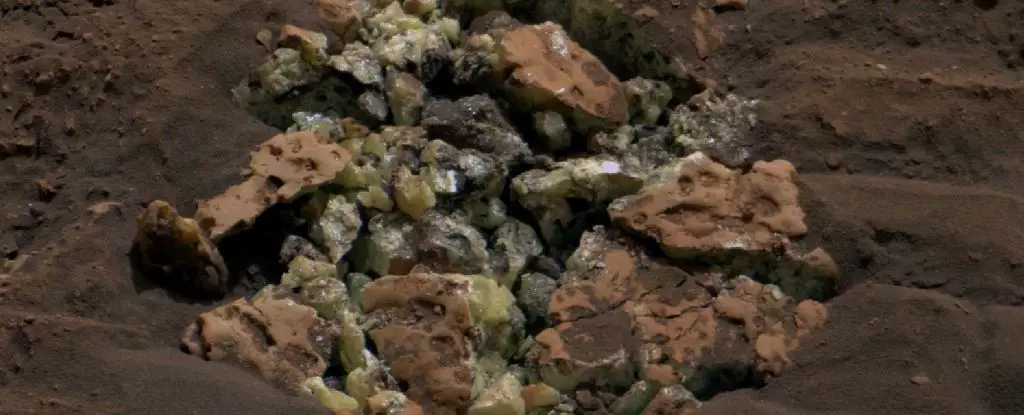In a remarkable twist of exploration, NASA’s Curiosity rover unearthed a stunning finding on Mars: pure elemental sulfur, or brimstone, nestled within a seemingly inconspicuous rock. This discovery occurred in May when Curiosity’s 899-kilogram (1,982-pound) body rolled over a particular rock in the Gediz Vallis Channel, leading to an unexpected rupture of its surface and unveiling vibrant yellow crystals. While the presence of sulfates has been previously established on Mars, this marks a groundbreaking moment as it is the first instance of finding sulfur in its pure form, raising intriguing questions about the planet’s geological history and the processes that led to this unique occurrence.
The Gediz Vallis Channel, known for its complex history as a channel that once carried water, now boasts a collection of rocks resembling the one that revealed sulfur crystals. These findings insinuate that elemental sulfur might not be an isolated discovery; instead, it could be present in significant quantities throughout the region, similar to an oasis in an expansive desert. As Curiosity project scientist Ashwin Vasavada aptly stated, the unexpected nature of this discovery compels scientists to delve deeper into understanding how such a rare element could be present under conditions not yet fully understood.
The formation of sulfates generally occurs when sulfur compounds interact with other minerals in the presence of water, which evaporates and leaves the salts behind. While sulfates provide valuable insights into Mars’ aqueous past and climatic evolution, the presence of pure sulfur speaks to a more complex set of environmental conditions. Pure sulfur typically forms under specific circumstances that have yet to be documented in the context of the Martian landscape. This challenges current geological models and indicates that there may be unknown processes at play that contributed to the existence of these sulfur deposits.
One essential aspect of sulfur is its crucial role in sustaining life. Often found in the form of sulfates, it is fundamental to producing amino acids necessary for protein synthesis in living organisms. While our knowledge of sulfates on Mars isn’t novel, the elemental sulfur discovery introduces a new dimension into the search for life. Although definitive signs of life have not been found on Mars thus far, these remnants of essential building blocks are tantalizing clues that suggest that Mars might have once supported conditions favorable for life.
Each piece of evidence gathered by Curiosity enhances our understanding of the planet’s potential habitability. The analysis of sulfur-rich materials adds a critical layer to our research, emphasizing not just the presence of necessary elements, but also the environmental contexts under which they occurred.
Curiosity will continue its journey across the Gediz Vallis, collecting more data as it advances. This historical landscape, shaped by ancient waterways, holds significant clues about Mars’ past. By drilling into rocks and extracting powder samples for chemical analysis, Curiosity aims to unravel further secrets of the Martian environment. Each exploration opportunity builds on our understanding, paving the way for necessary advancements in geological modeling.
The discovery of elemental sulfur carries profound implications for how we perceive and understand Mars. It suggests that there are still many unknowns about the planet’s geological evolution, and that our quest for knowledge is far from complete. As more missions are planned, both current and future explorers will be tasked with piecing together Mars’ enigmatic history, all while remaining vigilant for signs that could reveal whether life ever flourished beyond our own world. Each finding, including the unexpected presence of sulfur, fuels our thirst for knowledge about the cosmos and our place within it.


Leave a Reply